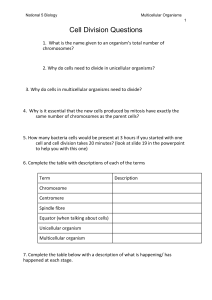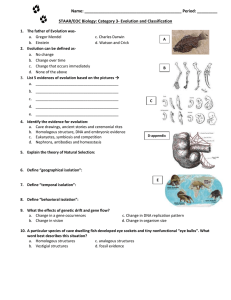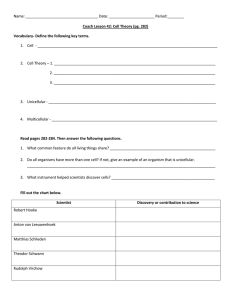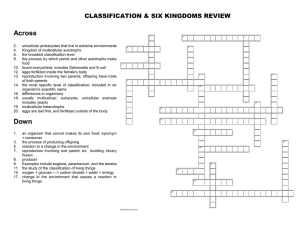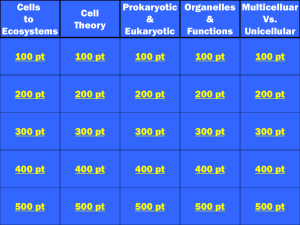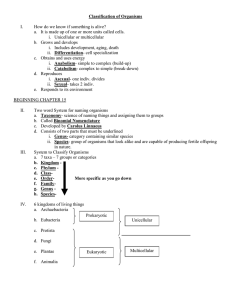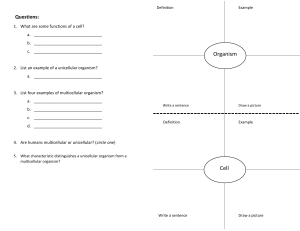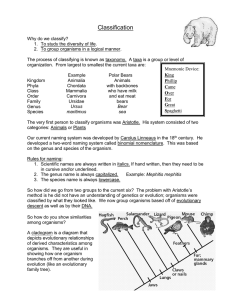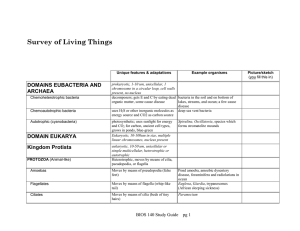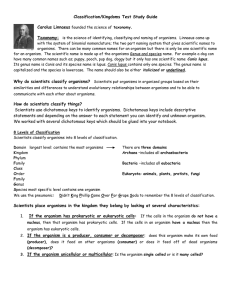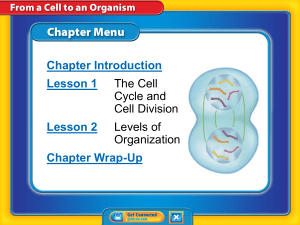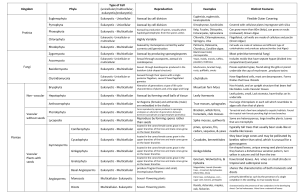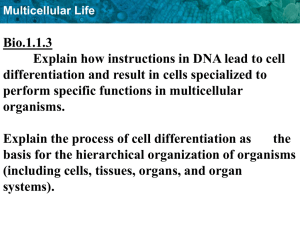Chapter 3 Lesson 2
advertisement
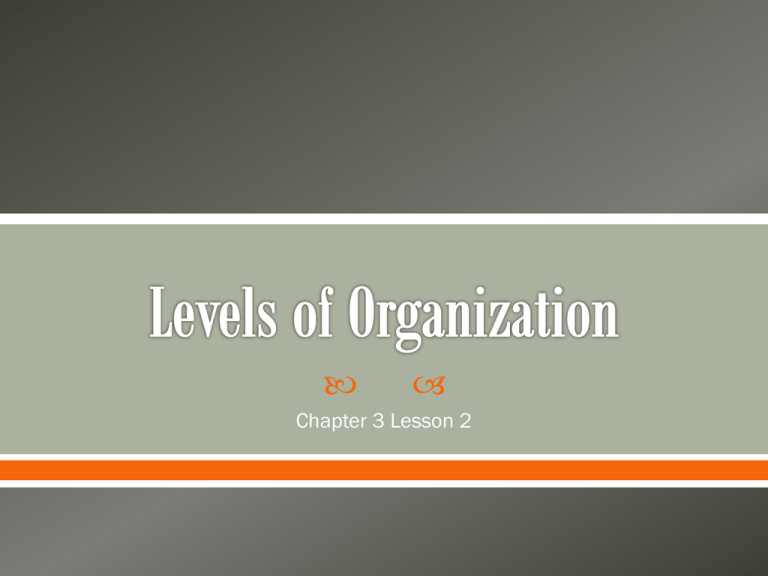
Chapter 3 Lesson 2 •How do unicellular and multicellular organisms differ? •How does cell differentiation lead to the organization within a multicellular organism? Unicellular organisms carry out all life processes, including responding to the environment, getting rid of waste, growing, and reproducing, within one cell. A unicellular organism made of one prokaryotic cell is called a prokaryote. A unicellular organism made of one eukaryotic cell is called a eukaryote. A cell without a membrane-bound nucleus is a prokaryotic cell. A eukaryotic cell has a membrane-bound nucleus and many other specialized organelles. Multicellular organisms are made of many types of eukaryotic cells working together, each with a specialized function. All cells in a multicellular organism come from one cell: a fertilized ovum (egg); a zygote The process by which cells become different types of cells is called cell differentiation. Stem cells are unspecialized animal cells that are able to develop into many different cell types. Plants have unspecialized cells similar to animal stem cells. These cells are grouped in areas of a plant called meristems. Tissues are groups of similar types of cells in multicellular organisms that work together to carry out specific tasks. Humans, like most other animals, have four main types of tissue: o Muscle o Connective o Nervous o epithelial The three main types of plant tissue are: o Dermal o Vascular o Ground Organs are groups of different tissues working together to perform a particular job. Organ systems are groups of different organs that work together to complete a series of tasks.
